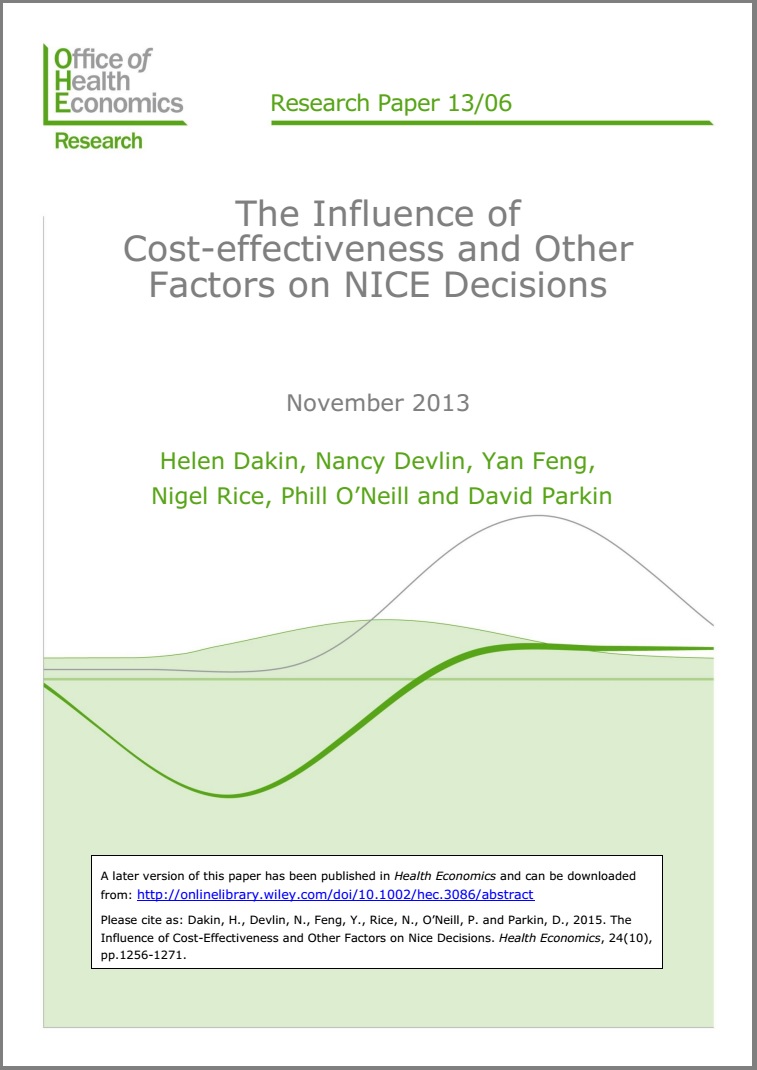In this Research Paper, the authors explore which factors have most influenced NICE decisions from 1999 through the end of 2011. The research has two objectives:…
In this Research Paper, the authors explore which factors have most influenced NICE decisions from 1999 through the end of 2011. The research has two objectives: identifying the influence of cost-effectiveness and other factors on NICE decisions, and investigating whether NICE’s decision making…
In this Research Paper, the authors explore which factors have most influenced NICE decisions from 1999 through the end of 2011. The research has two objectives: identifying the influence of cost-effectiveness and other factors on NICE decisions, and investigating whether NICE’s decision making has changed over time.
NICE’s decisions were modelled as binary choices, i.e. “yes” or “no” recommendations about use of a health care technology in a defined patient population. Independent variables included clinical and economic evidence about the technology; the characteristics of the patients, disease or treatment; and “contextual factors affecting the conduct of health technology appraisal”.
The authors note that “Cost-effectiveness alone correctly predicted 82% of decisions; few other variables were significant and alternative model specifications led to very small variations in model performance”. The probably of rejection increased significantly with increases in the incremental cost-effectiveness ration (ICER), with the tipping point most often being between £39,000 and £44,000. No significant change in this was observable over time.
Specific diseases were the only other significant influence. The study notes that “NICE rejections were significantly less likely for cancer and musculoskeletal disease, but significantly more likely for respiratory disease”, although cause and effect were unclear. The authors point out, however, that other one-off factors might have been considered by NICE, but not referred to in the official written recommendation. In addition, several factors that NICE has said do influence its decisions would be difficult to measure for the purposes of this research — e.g. disease severity and “innovation”. Also not included were measures of the robustness of clinical evidence or the extent of clinical uncertainty; both, the authors note, still have not been “properly captured . . . conceptually and empirically.”
This paper has been slightly revised from the original version posted on this website. The revised version was posted on this website on 8 May 2014.
A revised version of this paper has been published in Health Economics and can be downloaded from: http://onlinelibrary.wiley.com/doi/10.1002/hec.3086/abstract
Please cite as: Dakin, H., Devlin, N., Feng, Y., Rice, N., O’Neill, P. and Parkin, D., 2015. The Influence of Cost-effectiveness and Other Factors on NICE Decisions. Health Economics, 24(10), pp.1256-1271.

